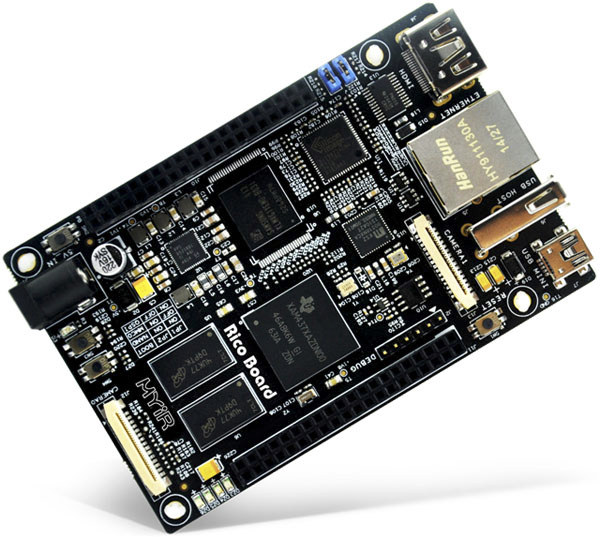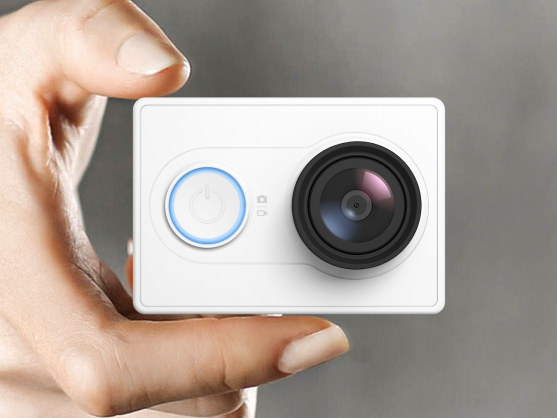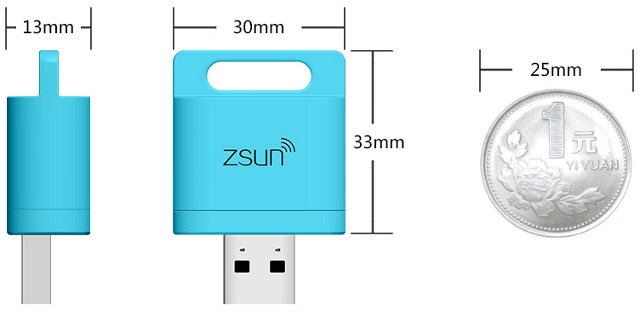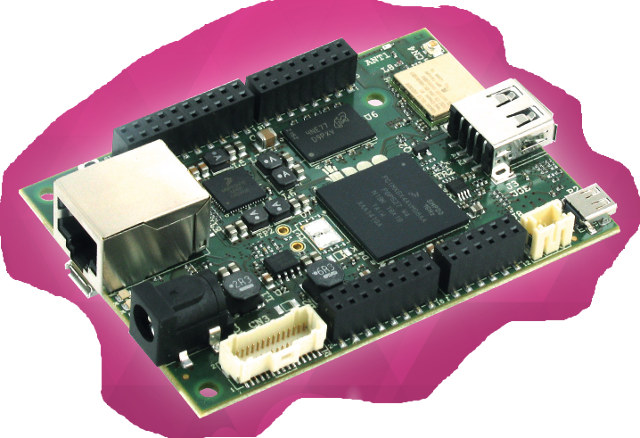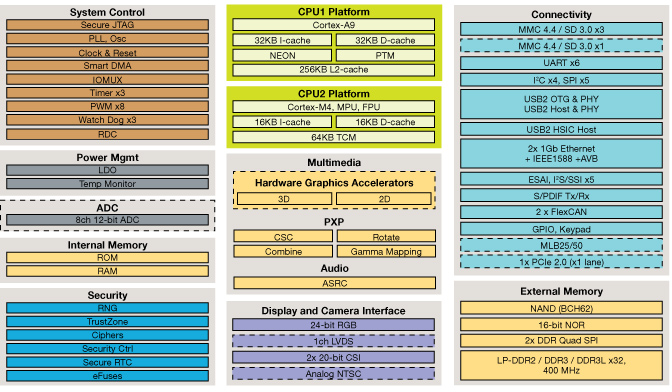I’ve read quite a few articles mentioning Docker recently, but never really looked into it. So what is Docker? The developers describe it as: Docker is an open platform for developers and sysadmins to build, ship, and run distributed applications. Consisting of Docker Engine, a portable, lightweight runtime and packaging tool, and Docker Hub, a cloud service for sharing applications and automating workflows, Docker enables apps to be quickly assembled from components and eliminates the friction between development, QA, and production environments. As a result, IT can ship faster and run the same app, unchanged, on laptops, data center VMs, and any cloud. In practice, it looks like a lightweight virtualization solution that facilitates apps distribution to different operating systems and hardware platforms. For example, if your development machine is running Ubuntu 14.04 and you’ve developed an app requiring Python 3.0, Docker should make it a breeze to it on […]
MYiR Tech Announces Low Cost Rico and Z-turn Boards Powered by TI AM437x and Xilinx Zynq-7010 SoCs
Shenzhen based MYIR Tech has just launched two new single board computers with Rico board featuring Texas Instruments Sitara AM437x ARM Cortex A9 industrial processor, and Z-Turn board based on Xilinx Zynq-7010 ARM Cortex A9 + FPGA SoC. Both boards sell for $99 in single quantity. Rico Board Specifications: SoC – Texas Instruments AM4379 single core ARM Cortex A9 processor @ 1.0GHz with PowerVR SGX530 GPU, and 4x PRU @ 200 MHz. Other AM437x on request. System Memory – 512MB DDR3 (Options: 256MB or 1GB) Storage – 4GB eMMC, 256 or 512 MB NAND flash (reserved), 16MB QSPI flash, 32KB EEPROM, and micro SD slot Video Output – HDMI and LCD interfaces (LCD connector located on bottom of the board). Connectivity – 10/100/1000 Mbps Ethernet USB – 1x mini USB 2.0 device port, 1x USB 2.0 host post Camera – 2x 30-pin camera interface Debugging – 1x debug serial port, […]
Xiaomi Yi Full HD Action Camera Sells for $64
Xiaomi has decided to enter the sports camera market with an inexpensive 1080p action camera called Xiaomi Yi that will sell for 399 CNY ($64) in China, and outspecs the $135 entry-level Go Pro Hero camera. Specifications of the Yi camera: SoC – Ambarella A7LS ARM1136 SoC System Memory – N/A Storage – Some internal storage for firmware, plus a micro SD slot for pictures/videos (up to 64GB) Camera 16MP Sony Exmor R BSI Back-illuminated CMOS Image Sensor Aspheric HD Optical Glass Lens / F2.8 Large Aperture 155° Ultra Wide Angle 1080p 60/48/30/24fps, up to 960p60, 720p120, 480p240 video recording Multiple photo shooting modes: Single shot, Self-Timer, Time-lapse, Burst Shot Display – None Video Output – micro HDMI port Audio – Dual-channel 96 KHz sampling rate, 92 dBa SNR Connectivity – WiFi & Bluetooth 4.0 (Broadcom) for connection with Android / iOS devices Sensors – ST High Performance 3-Axis G-sensor […]
Zsun Wifi Card Reader Adds up to 64GB to Your Smartphone
I’ve previously covered Zsun SD11x USB flash drives with 8 to 128 GB internal flash, a battery, and Wi-Fi connectivity in order to easily add storage to devices without micro SD slots. The company has now launched a new Wi-Fi card reader to do the same, but with your own micro SD card instead allowing up to 64GB extra storage, and easy replacement. Zsun card reader specifications: SoC – Qualcomm Atheros AR9331 WiSoC System Memory – 256 Mbit RAM (32 MB) Storage – Internal flash for firmware (capacity TBD), micro SD slot up to 64GB Connectivity – 802.11 b/g/n Wi-Fi @ 150 Mbps USB – 1x USB 2.0 port for power and use as standard USB card reader Dimensions – 33 x 30 x 13 mm There’s no battery, so you’d have to connect the dongle to a power bank, PC, car charger etc.. to power it. If you connect […]
Linaro 15.02 Release with Linux 3.19 and Android 5.0
Linaro 15.02 has just been released with Linux 3.19 (baseline), Linux 3.10.68 and 3.14.34 (LSK), Android 5.0.2, and Ubuntu Linaro Utopic. Listed changes for Linux Linaro are exactly the same as last month, except they’ve used Linux 3.9 release. Power management tools have been added to their AOSP build, and some work has been done for Android 5.0 on the new Hikey board. Here are the highlights of this release: Linux Linaro 3.19-2015.02 GATOR topic: version 5.20.1 updated integration-linaro-vexpress64 topic by ARM LT (FVP Base and Foundation models, and Juno support) updated topic from Qualcomm LT (ifc6410 board support) updated topic from HiSilicon LT (Hi36xx, HiP04, and X5HD2 families support) updated LLVM topic (the community llvmlinux-latest branch) included ILP32 patch set v3 rebased onto 3.19. Initial tests using syscalls LTP tests done. When using ILP32 userland, a few tests have to be skipped (msgctl07, msgrcv0[1-7], msgsnd01) to avoid the stalls, […]
GroBotz Interactive Robot Project is Made of Easy to Assemble Smart Blocks (Crowdfunding)
GroBotz makes me think of Lego applied to robotics. The project consists of modules such as motors, sensors, buttons, switches, or cameras that snap together in order to create a robot on wheels, games, toys, a musical instrument, or whatever idea you may have, and the hardware is then programmed using a graphical user interface. A Raspberry Pi board is used for the brain of the robot, and Microchip PIC MCUs for the smart blocks. The software is programmed in C# using Xamarin, the user interface is based on Unity, OpenCV is used for image processing, and during development a plastic part where printed with Makerbot, and schematics and PCB layout designed with CadSoft EAGLE. The company has now come up with a number of modules as shown in the picture below. Your robot can then be controlled over Wi-Fi with GroBotz app which works on Windows, Mac OS, iOs, […]
UDOO Neo Development Board is Powered by Freescale i.MX 6SoloX Processor
UDOO boards combine a Freescale i.MX6 dual or quad core processor with an external Atmel SAM3X MCU that’s programmable as an Arduino board, so as Freescale has now formally announced their i.MX 6SoloX processor with a Cortex A9 core running Linux and Android, and a Cortex M4 core running MQX real-time operating systems, it was logical that the company would soon launch a low cost development board based on this heterogeneous processor. Meet UDOO Neo. UDOO Neo board specifications: SoC – Freescale i.MX 6SoloX ARM Cortex-A9 core @ 1GHz and ARM Cortex-M4 Core with 2D/3D GPU System Memory – 512MB or 1GB DDR3 (only Plus version) Storage – On-board NOR SPI Flash, micro SD slot, 8-bit SDIO interface (on headers) Video Input/Output micro HDMI port LVDS interface + touch (I2C signals) Analog camera connection supporting NTSC and PAL 8-bit Parallel camera interface (on headers) Audio – HDMI USB – 1x […]
Freescale Announces i.MX 6SoloX ARM Cortex A9 & Cortex M4 Processor
Freescale i.MX6 SoloX processor started to show up in the ARM Linux Kernel mailing list last year, and Cortex A9 + Cortex M4 processor showed up in some marketing documents, but so far all documentation was tied to a non-diclosure agreement. However, all resources are now publicly available, as the company officially launched i.MX 6SoloX processor at Embedded World 2015. Freescale i.MX 6SoloX specifications: CPU – ARM Cortex-A9 up to 1 GHz with 512 KB L2 cache, 32 KB instruction and data caches and NEON SIMD media accelerator MCU – ARM Cortex-M4 up to 200 MHz with 16 KB instruction and data caches, 64 KB TCM, MPU and FPU Memory Interface 16/32-bit DDR3-800 and DDR3L-800, 16/32-bit LPDDR2-800 SLC/MLC NAND, 62-bit ECC, ONFI2.2 2x DDR Quad SPI NOR flash, 16/32-bit NOR Flash Display and Camera Interfaces Parallel RGB LVDS 20-bit parallel CMOS sensor interface NTSC/PAL analog video input interface Multimedia GPU […]



